The rest of the soldiers and The march of soldiers
cm 40 x 58 and 40 x 60; frame: h 52,5 x W 70,5 x D 6 and h 52,5 x W 72,5 x D 6
The very fine paintings, attributable to the painter Francesco Simonini, depict two different moments related to the vein of battles and military themes: “The rest of the soldiers” and “the march of soldiers”.
In one of the paintings you can see on the right in the foreground some soldiers sitting and playing dice, while next to a couple banquets with wine. The scene takes place outdoors, in a countryside, next to a rocky promontory on the top of which dominates a tower. On the left is a couple of gentlemen in noble clothes and a beggar hands them a hat as a sign of alms. In the background, are described other characters including soldiers on horseback and wayfarers, while in the distance you can see a city and a high bell tower. The horizon is outlined by rocky reliefs and other small villages. The blue sky is marked by some white clouds and fluffy.
The other painting depicts, in the lower half of the canvas, a military deployment in which several mounted soldiers are gathered and ready to march. In the distance there is a city with walls and towers beyond which a prominent mountain serves as a fifth to the scene. A few clouds brighten the clear sky.
The genre of painting battles and scenes closely related to the conflict, including the pay and support of troops, advancements and the March of soldiers, found great success in the collections of the Italian and European nobility of the seventeenth and eighteenth centuries. Battle painting was a popular genre and was requested above all by the great aristocratic families, such as the Medici in Florence and the Estensi in Parma, who loved to furnish their living rooms with the paintings of the most important "battallists".
Among these, Francesco Antonio Simonini (1686 - 1766) distinguished himself, who, after having worked in Parma, Rome, Florence and Bologna, realized most of his works in Venice.
The couple of paintings in this study can be returned with reasonable conviction for stylistic comparison, to the corpus of works of this famous Italian painter.
[…]
His particular style, characterized by rapid brushstrokes and the use of bright colors, is formed mainly under the influence of the Venetian school. Characteristic of his painting is also the tendency to realize elongated and sinuous figures, the attention to the particular landscape and architectural style also classic, the depth of the landscape that is lost to infinity, the almost indefinite horizon line for the confusion of heaven and earth, the drama and realism in which you notice the influence of Salvator Rosa. It is therefore possible to say that Simonini was able to reinterpret the lesson of his predecessors, enriching it with a Venetian-style colouring, acquired during the long stay in the lagoon city, and with a free and frayed touch, which gives lightness to the composition.
From the stylistic comparison between the works in question and those returned to the catalogue of Francesco Simonini are evident the peculiarities of his painting. The elegant elongated figures treated with sure and quick brushstrokes, the way in which the landscape and the sky are described, the chromatic palette are in fact completely comparable to many other canvases by Simonini. The same applies to the use of white, which the artist expertly uses, creating illuminations and points of light useful to give three-dimensionality to his figures and made material, such as the sparkle of weapons and the soft plumage of hats.
The print of an etching, preserved in Naples and taken from a drawing by Francesco Simonini, clearly shows a composition quite similar to that present in one of the two canvases in question. The mirror vision of the subjects derives from the printing technique itself: the engraving on copper of the drawing takes place on the plate, after which it is upside down and printed on paper producing a symmetrical image.
We apologize for any errors of translation from Italian. please click here to have the complete expertise in Italian


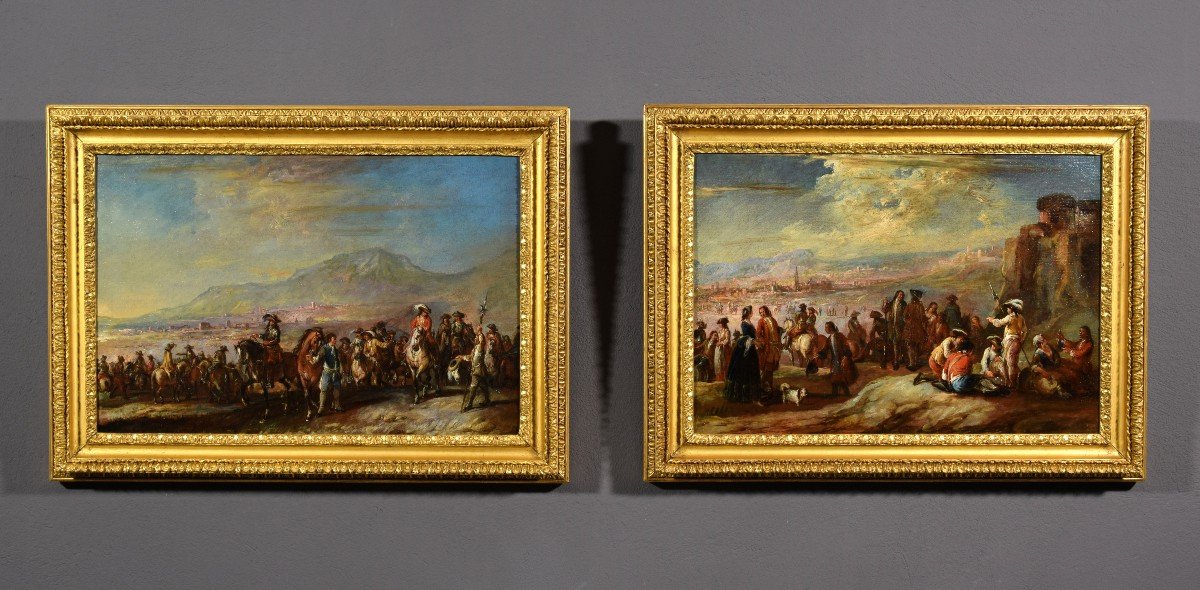

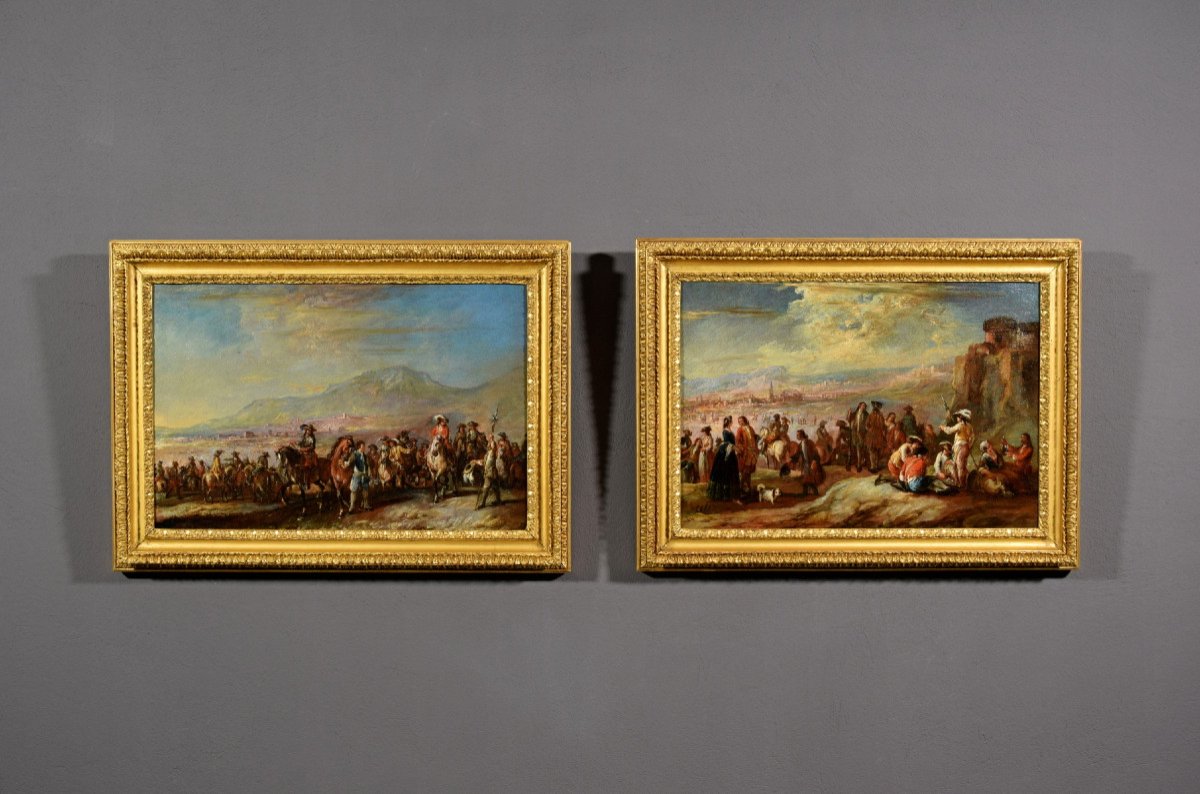
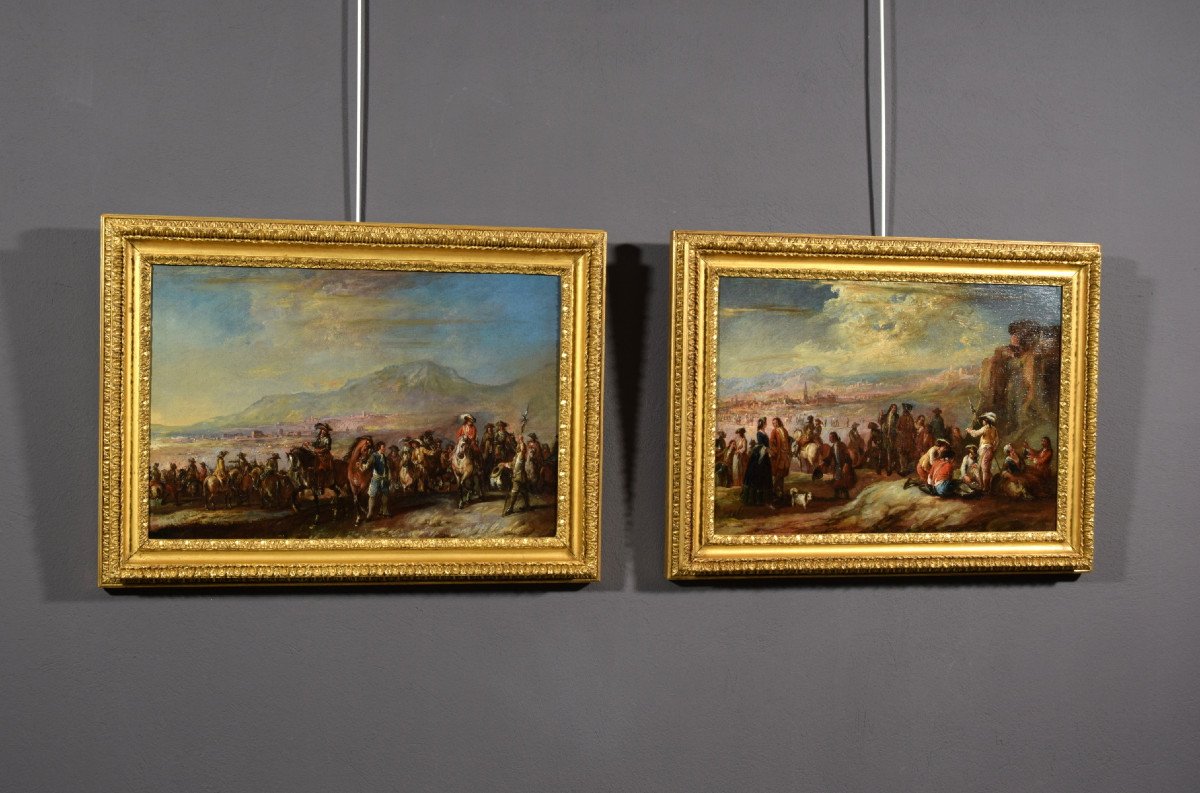
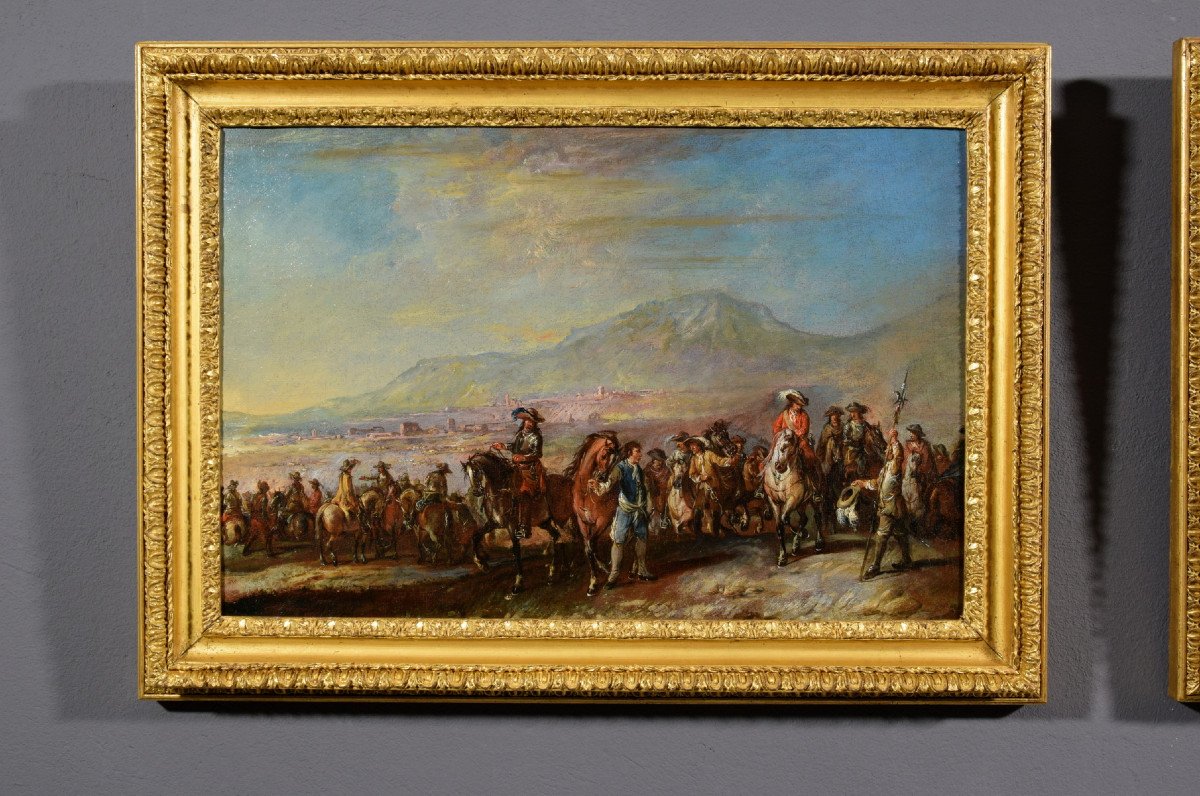

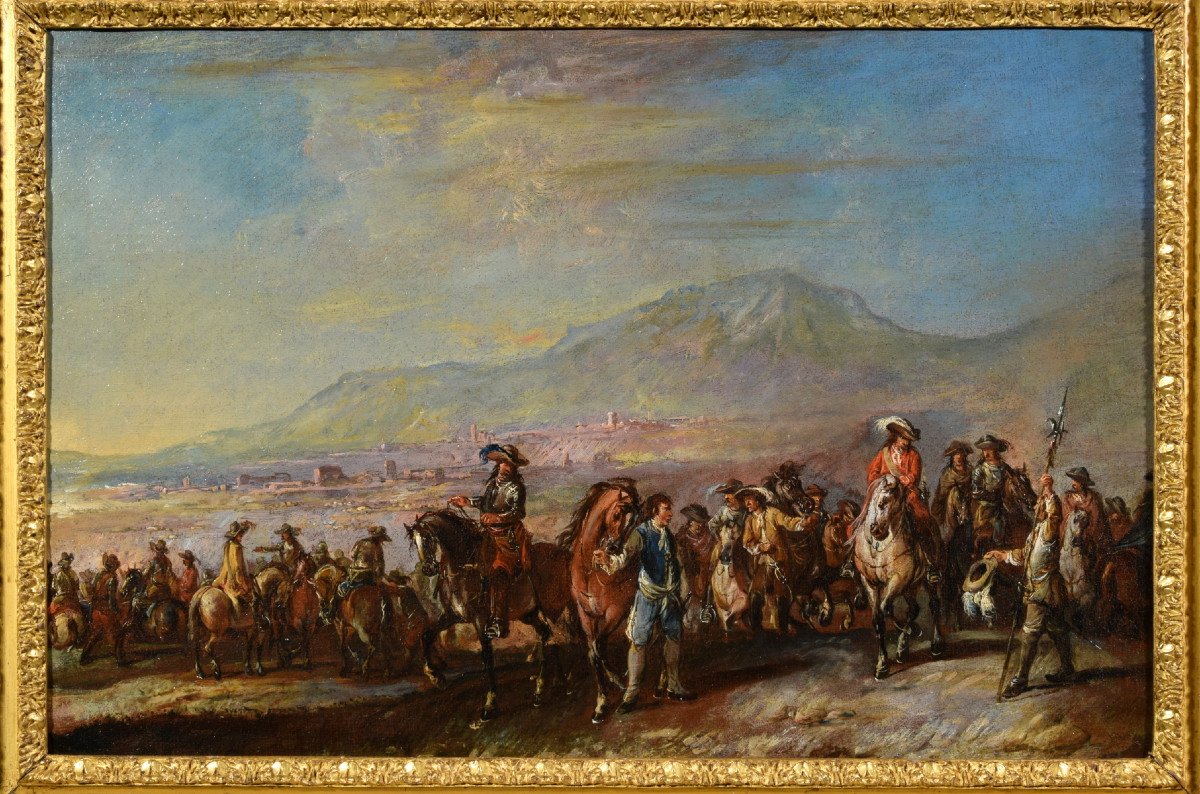




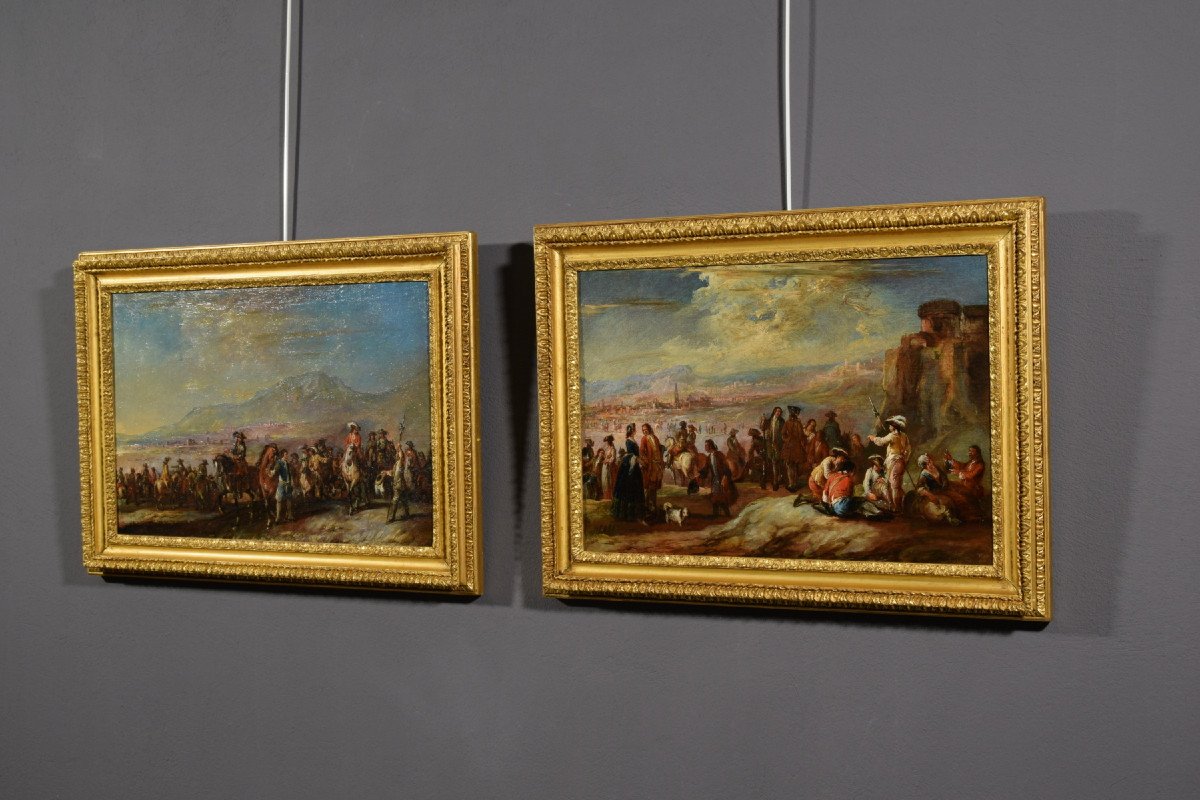




































 Le Magazine de PROANTIC
Le Magazine de PROANTIC TRÉSORS Magazine
TRÉSORS Magazine Rivista Artiquariato
Rivista Artiquariato